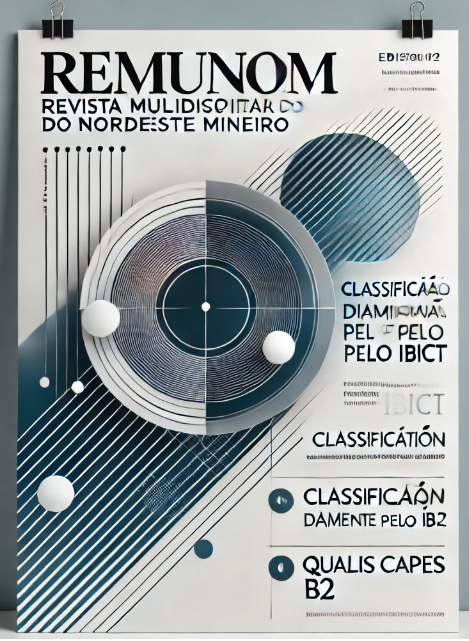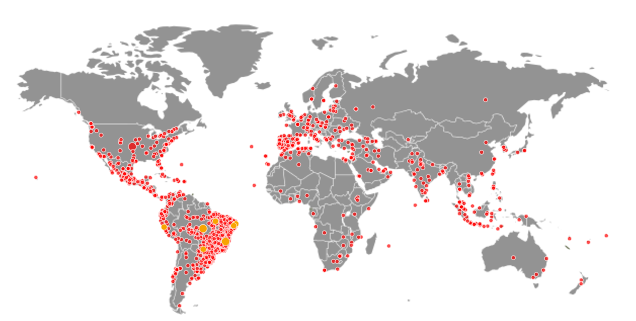DESENVOLVIMENTO DE FUNGOS NEMATÓFAGOS EM DIFERENTES MEIOS DE CULTURA
DOI:
https://doi.org/10.61164/rmnm.v5i1.3644Keywords:
Controle biológico, Clavicipitaceae, Esporulação, Orbiliaceae, TrichocomaceaeAbstract
Nematophagous fungi are capable of developing trap-like structures to capture and destroy the infective stages of nematodes. The aim of the present study was to analyze radial mycelial growth, sporulation, and Colony-Forming Units (CFUs) in Arthrobotrys musiformis, Arthrobotrys robusta, Arthrobotrys oligospora, Monacrosporium eudermatum, Monacrosporium elegans, Pochonia chlamydosporia, Dactylella leptospora, and Paecilomyces lilacinus, using six solid culture media and two liquid media, with four replicates for each treatment. The experiments were conducted in a BOD-type chamber, in the dark, at a temperature of 25 ± 1°C, in the Nematology Laboratory of the Faculty of Agricultural and Veterinary Sciences (FCAV/UNESP), municipality of Jaboticabal, São Paulo state, Brazil. The solid media were incubated for 15 days, with measurements taken every 48 hours (up to 288 hours). The liquid media were incubated under the same conditions for 21 days, subjected to homogenization and serial dilutions for CFU counting. Means were compared using Duncan’s test at a 5% probability level. The fastest radial mycelial growth was observed in semi-solid water agar (AA) for A. musiformis, A. robusta, M. eudermatum, and M. elegans. Furthermore, the same pattern was observed for M. eudermatum and M. elegans incubated in rice water, dextrose, and agar (RDA). The potato dextrose (PD) liquid medium was the most suitable for CFU production.
References
ALCÂNTARA, V. S. B.; AZEVEDO, J. L. Isolamento e seleção de fungos predadores de nematoides. Revista de Agricultura, v. 56, n. 3, p.132-146, 1981.
BRAGA, F. R.; SILVA, A. R.; ARAÚJO, J. M.; CARVALHO, R. O.; ARAÚJO, J. V.; FRASSY, L. N. Atividade predatória de fungos nematófagos Duddingtonia flagrans, Monocrosporium thaumasium e Artrobotrys robusta sobre larvas infectantes de Strongyloides stercolaris. Revista da Sociedade Brasileira de Medicina Tropical, v. 43, n. 5, p. 588-590, 2010. DOI: https://doi.org/10.1590/S0037-86822010000500024
CASTRO, J. M. C.; LIMA, R. D. de; FERRAZ, S.; NEVES, J. C. L. Capacidade de predação de Arthrobotrys musiformis a fitonematóides. Summa Phytopathologica, v. 26, n. 1, p. 58-62, 2000.
DIDAS, W. P.; FERRAZ, S. Crescimento e esporulação de Arthrobotrys spp. em diferentes substratos, meios de cultura, pH e níveis de temperatura. Nematologia Brasileira, v. 17, n. 2, p. 168-181, 1993.
DHINGRA, O. D.; SINCLAIR, J. B. Basic plant pathology methods. Florida: CRC Press, 1995. 434p.
GOELDI, E. A. Relatório sobre a moléstia do cafeeiro na província do Rio de Janeiro. Arquivos do Museu Nacional, v. 8. Rio de Janeiro: Imprensa Nacional, 1887. 121 p.
HICKMAN Jr., C. P.; ROBERTS, L. S.; KEEN, S.; EINSENHOUR, D. J.; LARSON, A.; I’ANSON, H. Princípios Integrados de Zoologia. 16ª ed. Rio de Janeiro: Guanabara Koogan, 2016. 954p.
JANSSON, H. B. Predacity of nematophagous fungi and its relationship to the attraction of nematodes. Microbial Ecology, v. 8, n. 3, p. 233-240, 1982. DOI: https://doi.org/10.1007/BF02011427
JANSSON, H. B.; TUNLIB, A.; NORDBRING-HERTZ, B. Biological control: nematodes. pp. 38-50. In: ANKE, T. (Ed.). Fungal Biotechnology. Weinheim: Chapman & Hall, 1997. 432p.
LEITE, L. G.; BATISTA FILHO, A.; ALMEIDA, L. E. M.; ALVES, S. B. Produção de fungos entomopatogênicos. Ribeirão Preto: Livroceres, 2003. 92p.
MACIEL A. S.; ARAÚJO, J. V.; CAMPOS, A. K. Viabilidade sobre larvas infectantes de Ancylostoma spp. dos fungos nematófagos Arthrobotrys robusta, Duddingtonia flagrans e Monacrosporium thaumasium após esporulação em diferentes meios de cultura. Revista Brasileira de Parasitologia Veterinária, v. 15, n. 1, p. 182-187, 2006.
MORGAN-JONES, G.; RODRÍGUEZ-KABANA, R. Fungal biocontrol for the management of nematodes. pp. 94-99. In: VEECH, J. A.; DICKSON, D. W. (Eds.). Vistas on Nematology: a commemoration of the twenty-fifth anniversary of the society of Nematologists. Hyattsville: Society of Nematologists Inc., 1987. 509p.
NAIME, M. F. Isolamento de fungos com atividade nematofágica em solo paranaense. 2009. 66f. Dissertação (Mestrado em Microbiologia, Parasitologia e Patologia) – Universidade Federal do Paraná, Curitiba.
OLIVEIRA, I. M. Aspectos biológicos do fungo entomopatogênico Aschersonia sp. cultivado em diferentes meios de cultura. 2008. 47f. Dissertação (Mestrado em Agronomia/Entomologia), Universidade Federal de Lavras, Lavras.
PELCZAR Jr. M. J.; CHAN, E. C. S.; KRIEG, N. R. Microbiologia: conceitos e aplicações, vol. 1. 2ª ed., São Paulo: Pearson Universidades, 1996. 592p.
QUEIROZ, F. M.; BATISTA, U. G.; BROMMNSCHENKEL, S. H. Avaliação de meios de cultura no crescimento micelial e esporulação de Alternaria brasiliensis. Fitopatologia Brasileira, v. 29, p. 541-543, 2004. DOI: https://doi.org/10.1590/S0100-41582004000500012
SASSER, J. N.; FRECKMAN, D. W. 1987. A world perspective on nematology: the role of the society. pp. 7-14. In: VEECH, J. A.; DICKSON, D. W. (Eds.). Vistas on Nematology: a commemoration of the twenty-fifth anniversary of the society of Nematologists. Hyattsville: Society of Nematologists Inc., 1987. 509p.
SILVA, J. L. da; TEIXEIRA, R. N. V. Esporulação e crescimento micelial de Fusarium solani em diferentes meios de cultura e regimes de luminosidade. Revista Agro@mbiente On-line, v. 6, n. 1, p. 47-52, 2012. DOI: https://doi.org/10.18227/1982-8470ragro.v6i1.604
SOARES, P. L. M.; NOZAKI, M. de H.; BARBOZA, B. F. F.; SANTOS, J. M. dos S.; BARBOSA, J. C. Crescimento e esporulação de duas espécies de Arthrobotrys corda em diferentes meios de cultura e dois ambientes. Bioscience Journal, v. 25, n. 2, p. 63-74, 2009.
Downloads
Published
How to Cite
Issue
Section
License
Copyright (c) 2025 Revista Multidisciplinar do Nordeste Mineiro

This work is licensed under a Creative Commons Attribution-NonCommercial-ShareAlike 4.0 International License.




